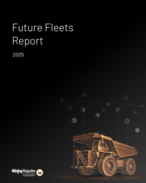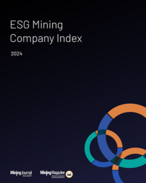Days after clinching financing for Indonesia’s $US2.8 billion Donggi-Senoro LNG project, Allen & Overy lawyers Scott Neilson, based in Tokyo, and Sydney-based Adam Stapledon, who also worked on the $10 billion Roy Hill financing deal in Western Australia, revealed that Japan’s insatiable demand for energy in the wake of the Fukushima tragedy wasn’t the only thing driving the country to invest in overseas energy projects.
“The reality in terms of funding LNG projects is that due to Japan’s declining population, Japan’s banks have a declining and very competitive market – they can’t lend as much money as they want at home,” Australian-born Neilson told Energy News.
“Therefore you’re seeing the Japanese banks looking for returns overseas, and continuing to invest extensively in LNG projects, including those in the US, along with the likes of DSLNG and Ichthys in Darwin.
“Japan is going after growth all over the world, and the oil and gas sector is one of the key sectors for them to invest. Likewise in mining, like we saw on the deal Adam did in Roy Hill.
“I think the need to chase sources of revenue for them is very important – including the Japanese trading companies and the Korean trading companies and banks, because of the declining market at home.”
Allen & Overy has been involved in organising the often complicated arrangements in over 50 LNG projects worldwide, and closed some $14 trillion worth of export credit agency deals from 2004-13.
Neilson said ECA financing was an important funding mechanism for LNG projects.
“While it’s different in Australia because you don’t have as much political risk, in countries like Indonesia and other developing countries you do, so you need ECAs,” he said.
ECAs, practically unheard of just over a decade ago in the Australian legal fraternity, had also become a critical cog as projects are developed in new jurisdictions.
“For the export credit agencies in Japan and Korea, it’s a key market for them in terms of supporting Japanese and Korean business overseas to be assisting those projects,” he said.
“There is plenty of will for export credit agency and Japanese-Korean bank involvement, especially with the market changing.
“When I was a junior lawyer in Australia you’d never hear of an ECA. Now, we’ve seen projects like Australia Pacific LNG, Ichthys and Roy Hill where you have huge numbers of foreign banks and ECAs involved in those transactions, and the market has fundamentally changed.”
While Japan and Korea’s total lack of resources means they will always be on the lookout, Neilson, who worked on the Ichthys project as the counsel for the borrower, said there is enough movement from other developing Asian economies to sustain LNG demand even if Japan’s nuclear power stations come online.
“Even if Japan still restarts nuclear power stations, and maybe, potentially, impacts some of the demand side, there is still growth in demand and need for replacement of supply in Korea, as well as China, India, Taiwan; and now there is also the emergence of new markets in new importing countries like Thailand, Singapore, Malaysia, Vietnam and the Philippines,” Neilson said.
Geopolitical issues around Russia and the Ukraine and the rise of the US as a cheap gas exporter were also complicating the already tangled web that is the global US LNG trading market, Neilson said.
He cited the key projects coming up as Gazprom’s Vladivostok LNG, which is being affected by politics; while in Australia, projects are being affected by their remoteness from the workforce and cost issues.
On the other hand, Stapledon said that some resources projects could still go ahead despite progressing at an “unpopular” time in the cycle.
“The fundamentals of the deal still have to stack up,” Stapledon told Energy News.
“But if you take a sensible view of what the long-term price curve looks like, and have sensible and financially viable arrangements in place, the fact that we’re in a lower point in the cycle won’t stop the really good projects from happening. It will stop the ‘less really good’ projects from happening right now.”























